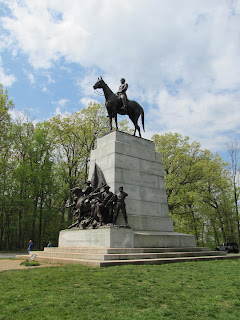Flyboys
By James Bradley
(Blogger Note: This review was originally published in The LAMLight, the physician newsletter of the Lynchburg Academy of Medicine, Lynchburg, Virginia.)
Flyboys is the true story of nine World War II dive-bomber
pilots and the attacks on the island
of Chichi Jima Iwo
Jima and was strategically critical because of two communications
towers there which the Japanese used to deliver orders to the Imperial Navy in
the Pacific. Coincidental with the
ground attack on Iwo Jima , the Navy attacked
Chichi Jima with dive bombers. Nine
flyers were shot down during the attacks.
Eight were captured and executed and the ninth, George H. W. Bush was
rescued by an American submarine and survived to become President. The author uses recently declassified
documents as well as interviews with many surviving family members and fellow
combatants, including Japanese, to tell the story of these flyers.
This book is a cold reminder that wars are fought by the
best, bravest and brightest of our youngest citizens. The portraits of these boys are poignant and
the reader is left with a great sense of loss when each of these brave pilots
is killed. The concept of “what could
have been” is underscored by the great contributions and successes of the elder
George Bush. One can’t help but wonder
what heights the other eight could have achieved as well.
The author also does an exceptional job of explaining the
Japanese mindset leading up to the attack on Pearl Harbor . He goes through the history of Japan following
the visit to the previously self-contained island nation by Commodore Matthew
Perry in 1853. The Japanese quickly moved
from an isolationist policy to an imperialist policy which culminated nearly a
century later with the Pearl Harbor attack.
Mr. Bradley spends several chapters explaining the then
radical new theory of war espoused by army colonel Billy Mitchell. Colonel Mitchell had been in charge of America ’s air support in France in WWI and witnessed the
horror of trench warfare. He had the
vision to understand what he called the “Third Dimension” of warfare: air
power. In the years leading up to World
War II he called for more aircraft and new strategies to utilize them. He was loudly denounced by traditional
militarists but found one believer in Franklin Roosevelt. This set the stage for the bombing raids over
Europe and eventually on the Japanese homeland
during World War II.
Mr. Bradley concludes the book with an account of the
firebombing of Tokyo
and other Japanese cities at the conclusion of the war. This strategy was ordered by General Curtis
LeMay and accounted for more civilian casualties than the atom bombs dropped on
Hiroshima and Nagasaki . The author uses first hand accounts from
Japanese survivors to tell the horrible story of the napalm bombings of these
Japanese cities. Looking back from an
era of reporting from the front lines and media immersion with combat troops,
it is hard to imagine that the ghastly results of this technique were kept from
the American public.
James Bradley is the son of one of the Marines who raised
the flag on Mount Suribachi on Iwo Jima, an event immortalized on film and with
the statue in Arlington , Virginia






























